- You are here:
- Home »
- Blog »
- Video Tutorial »
- 7 Steps to Painting a Realistic Acrylic Baby Portrait
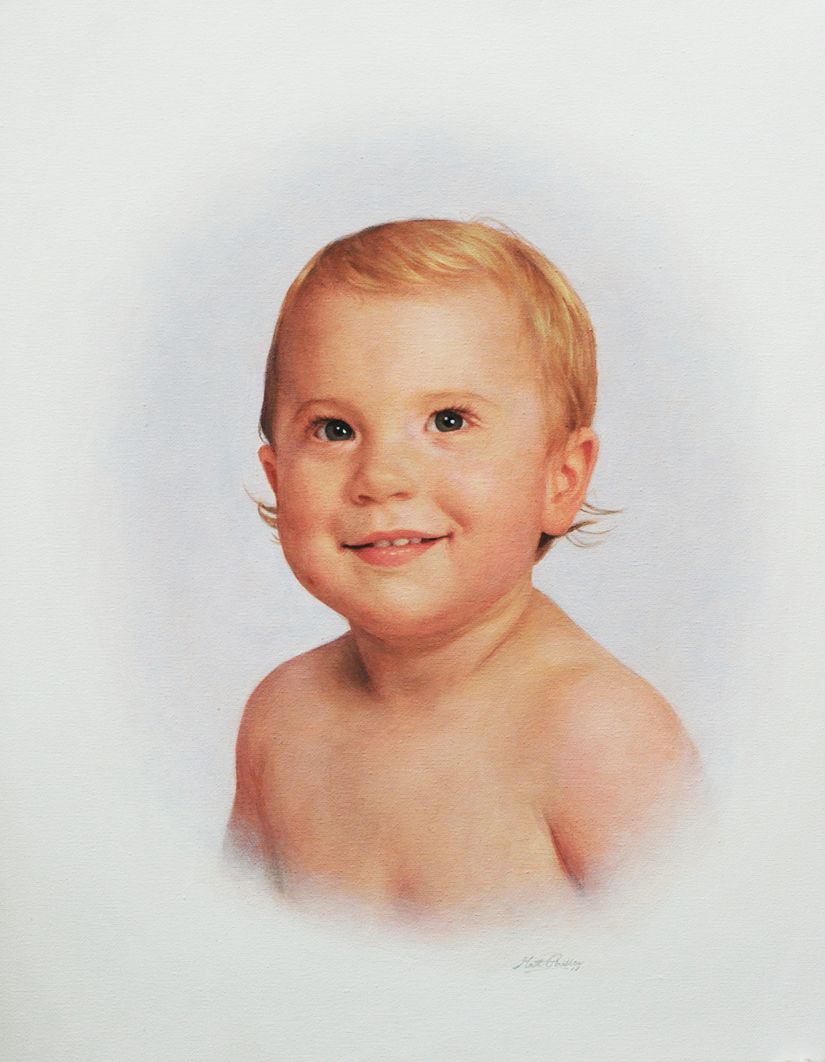
7 Steps to Painting a Realistic Acrylic Baby Portrait
I’d like to show you, step-by-step, how I painted a portrait of a beautiful baby.
This was a commissioned portrait, a 16″ x 20″ acrylic on canvas, and it took me about 25 hours to do. Follow along in the process, and I believe you will learn a new approach to painting portraits in acrylic that will pleasantly surprise you!
Or, if you’ve tried my techniques before, this will be a good review for you.
Acrylic Painting
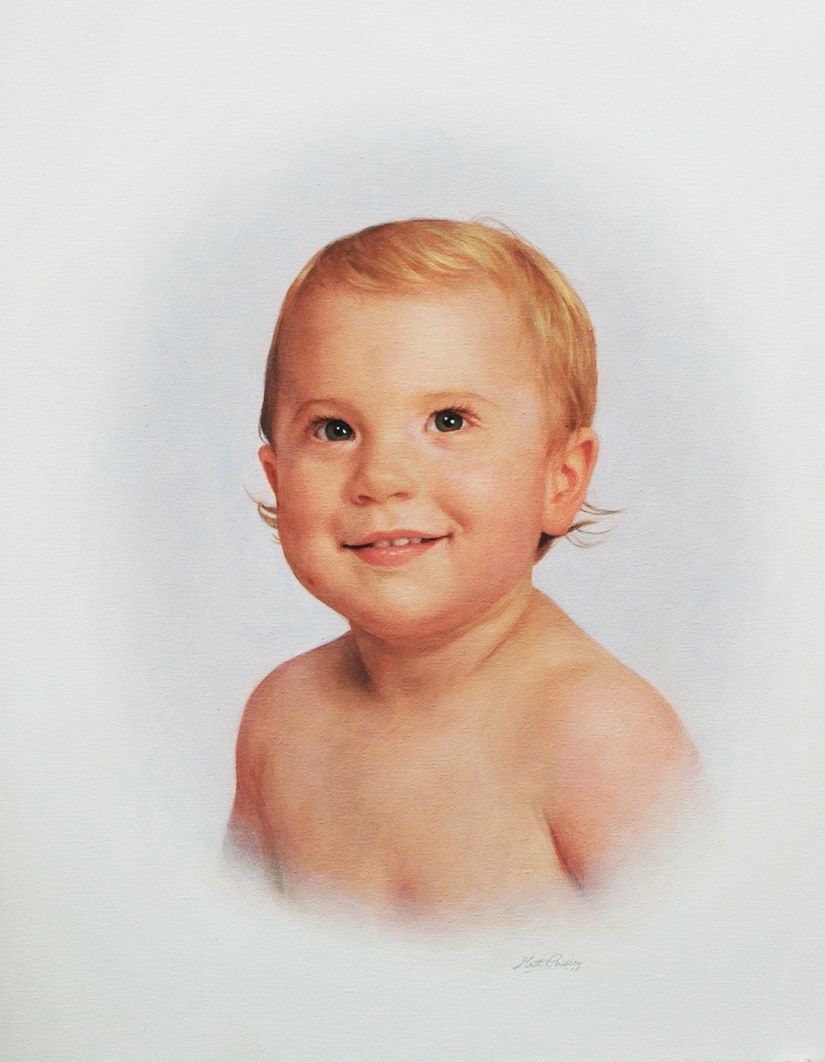
The client wanted a painting that was in an oval vignette style, to match some existing portraits in her home. Here is the photo she supplied me with, to paint from. She wanted me to make his hair combed off to the side, unlike what you see in the photo. That’s an easy enough change to make.
Reference Photo
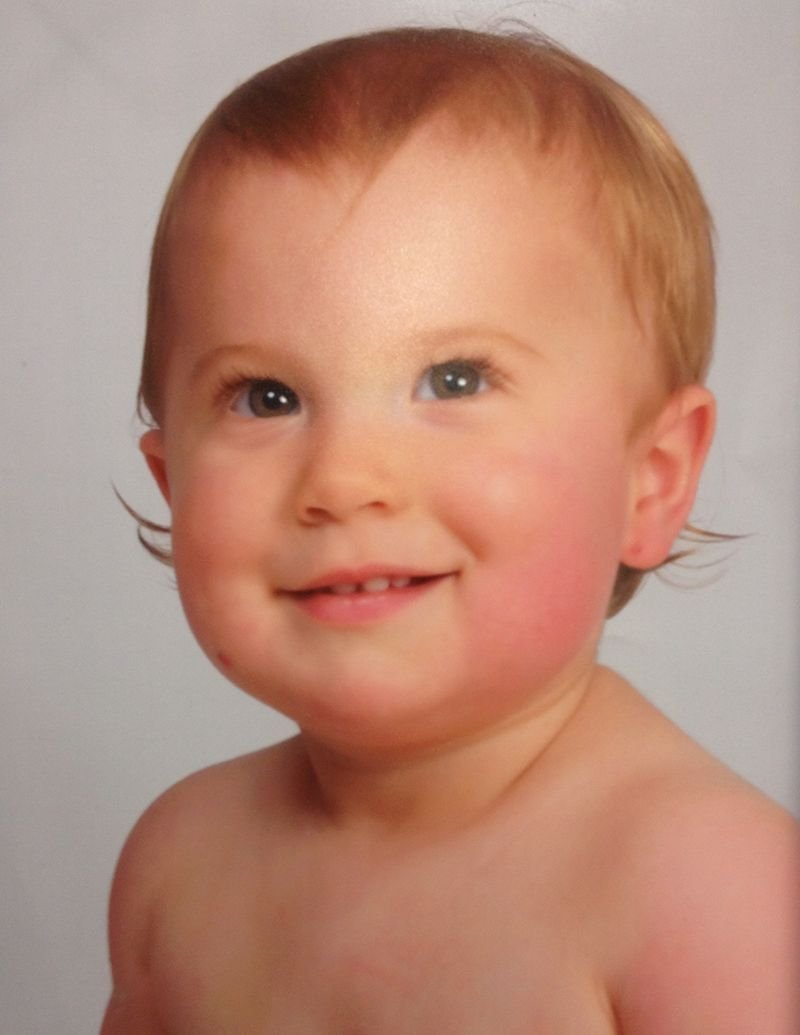
Now, let’s go through the process on how I painted this portrait.
Step 1: The Sketch
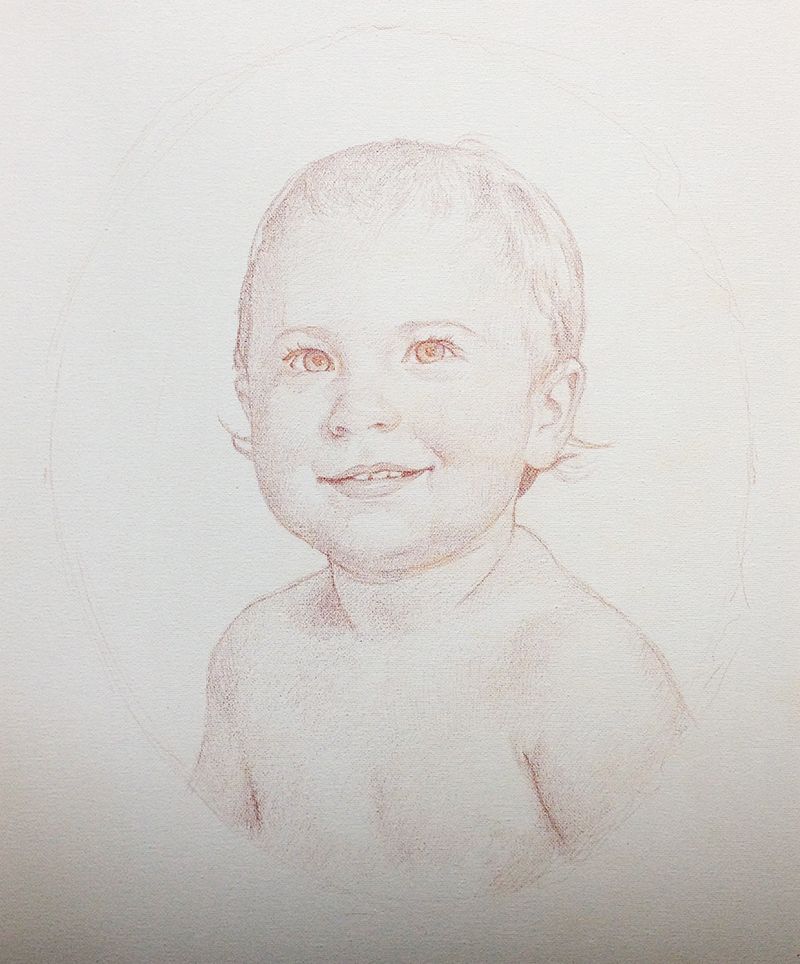
The sketch is the most important part of any portrait painting–whether in acrylic, oil or watercolor. The sketch is the foundation. Just like any house builder won’t build without a blueprint–unless they want a lopsided house–an artist shouldn’t plan do a lifelike portrait without an accurate sketch.
Some artists can work without one, starting very loosely, by just blocking in colors and value roughly, and work their way into detail–but it takes a lot of experience to pull that off. Many of those artists who can do that cut their teeth in learning how to draw, with hours of practice.
So for most artists–I recommend starting your painting with a sketch. You can use a grid or a projector to help if you haven’t done a lot of freehand drawing.
I have found that colored pencil is an amazing way to sketch on canvas. It works so much better than graphite pencil.
Why?
Well, first of all, you can choose a sepia or earth tone that really matches your skin tones within the portrait. Secondly, it is surprisingly easy to erase on a properly prepared canvas. Just go over your canvas with a mixture of 50%/50% gesso and matte medium.
Let it dry. And you’re set. You’ll be able to sketch and erase like a dream.
By the way, I use Prismacolor dark brown or terra cotta for sketching.
In the sketch, I make sure I’ve not only captured the shapes and lines of the baby’s face accurately, but I also want to get the shading in. Shading is what makes the difference on a portrait. So if you can get it in there during the sketch stage, it’s a lot less work figuring out where to go in the painting stage. Basically, all you’re doing is enhancing what you’ve put down in pencil.
Step 2: Sealing in Your Sketch
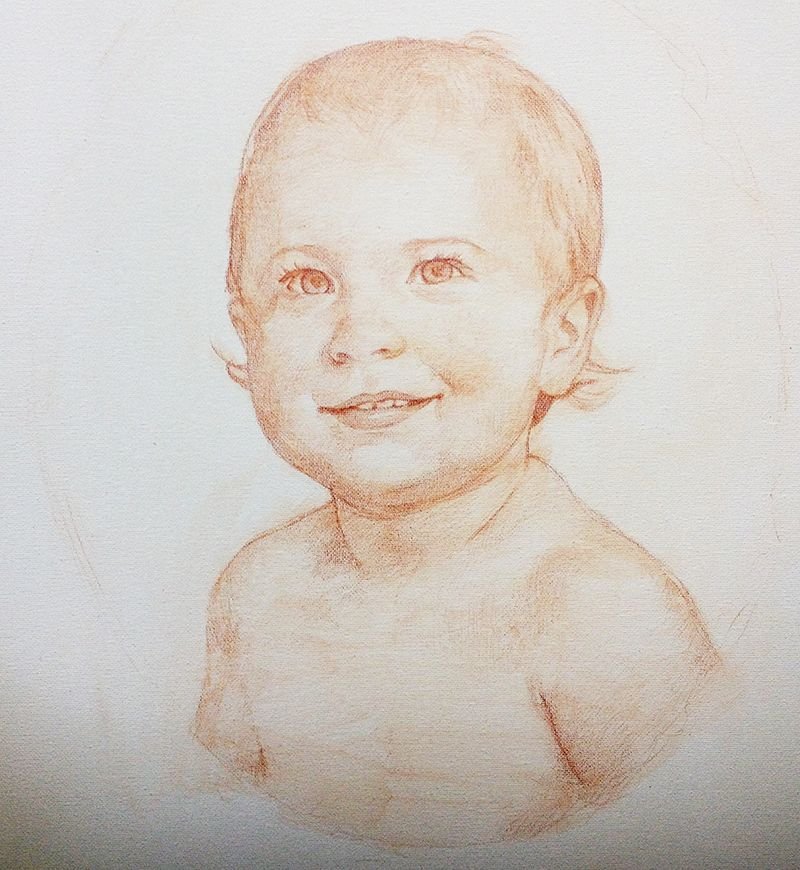
After you’re confident the sketch is looking accurate, the next step is to seal it in. What I mean by that is this: you’ll take some matte medium (that’s the clear acrylic without pigment and dries to a flat finish–get it at your local art store) and you brush it on the sketch to create a barrier between the sketch and your painting.
The last thing you want to have happen is your sketch to get all messed up as you apply the brush in the painting process!
So, what I did was put the medium in a little condiment container (like what you put your ketchup in at a fast food restaurant, and you can buy these inexpensively at Walmart in the food storage section) and then start covering over your sketch. You’ll need to be careful, though, not to smear your sketch work!
Actually, you can make it work for you. I found that the medium started mixing with colored pencil pigment and turned into a glaze, or faint paint layer. I brushed it on in the direction of the contours of the face, and it enriched the color and contrast of the sketch. You can see the difference between the sketch before and after it was sealed in.
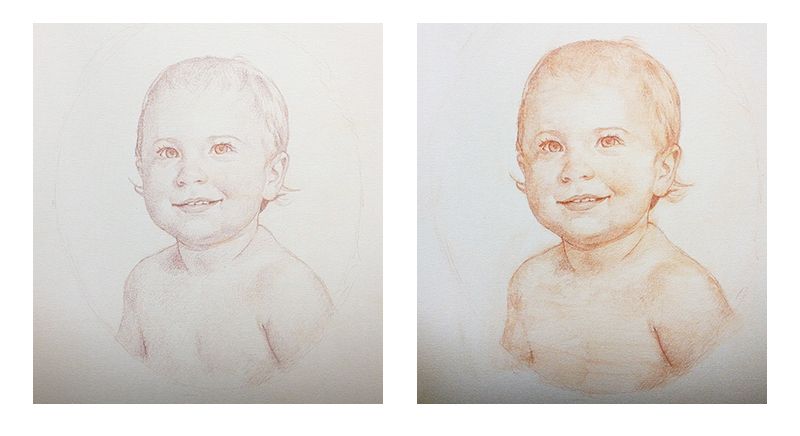
If it makes for less work in the painting stage…why not try something new?
Step 3: Blocking in the Initial Color and Value
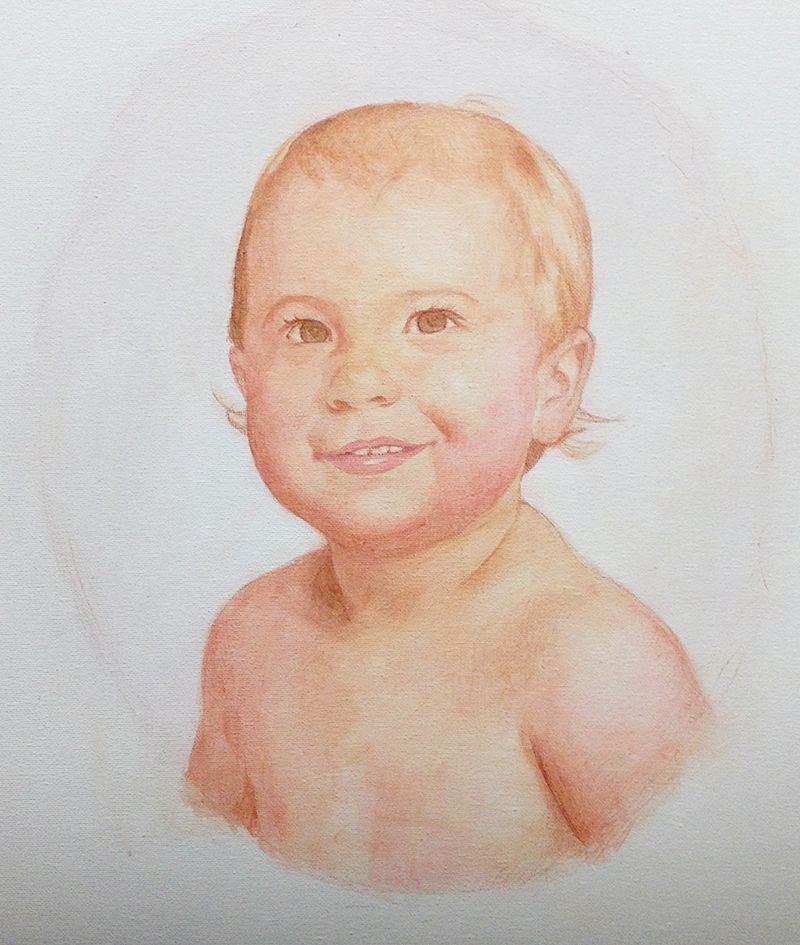
Now, in this stage, it’s important to cut yourself a little slack.
Because when you start establishing the colors and value, your sketch is getting covered up a little, and you lose some of the overall cohesion of the values that you drew.
What I mean is that, you’re kind of in an in-between stage, and like any in-between stage in life, it can look a little awkward. If you have children, think of how they looked when they first started to walk. The could crawl like an expert, but once they started to walk, they waddled, wobbled, fell, maybe even cried, and got back up again.
So, in this stage, as you put down a few layers, things may look a little messed up.
No worries.
Just keep going.
Look at your reference photo and keep in mind, you have a blueprint to follow. Sooner or later, your painting will look very similar to what you see in the reference photo.
I used raw umber dark for the shadows, raw sienna, and alizarine crimson for the lighter areas. The crimson works well for establishing the pinkish tones in the baby’s cheeks and lips. Everything is very faint. I use matte medium to thin out the paint, and glaze it in with very minute layers. I love this technique. You can easily adjust the direction of your painting on the fly, and you can build up a lot of shading, even though acrylic dries so fast.
Finally, because the layers are translucent, the light shines through the surface, giving you a richness and a depth that will have people often mistaking your acrylic paintings for oils!
Step 4: Bringing out the Dark Values
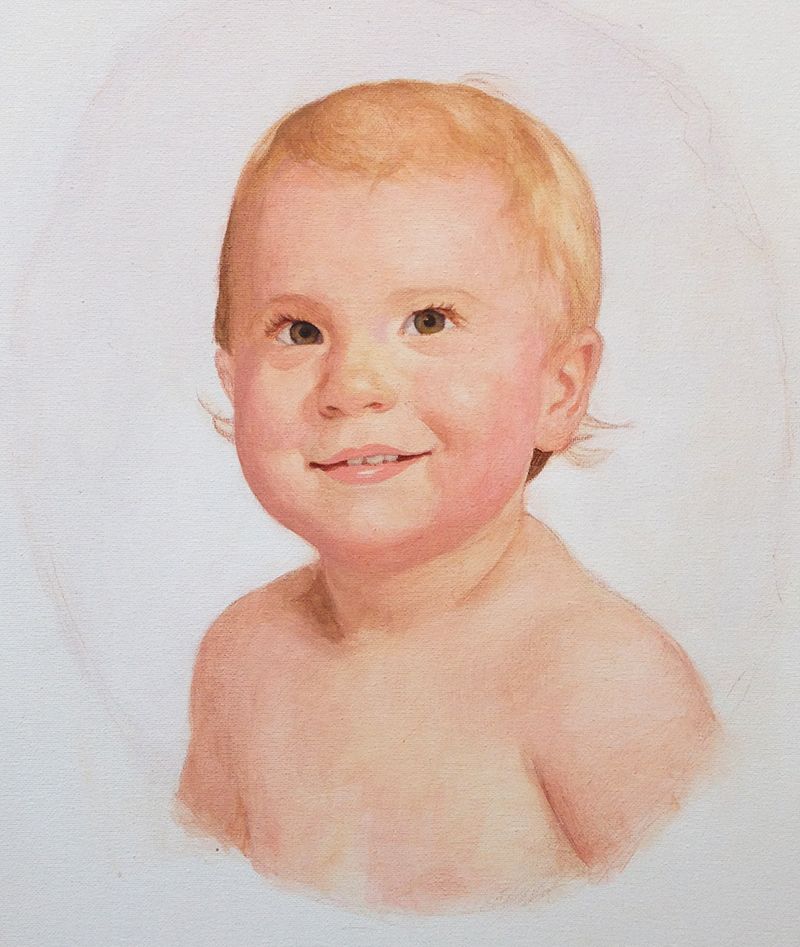
At this step, I wanted to make sure the baby’s eyes would be dark enough. I also wanted to darken certain spots of the painting so it more closely matched the values of the reference photo: areas like the hair under the ears, the shadow to the left of his neck, and the crevices in the mouth on either side of the teeth.
When you get the darkest values established, then you know what you’re up against. It makes it easier to know how dark to take the rest of the painting. Because with values and colors, everything is relative. Once you darken a certain area, it will look out of place until you darken everything else accordingly.
In addition, I added more color to the face and hair, using a mixture of raw sienna and alizarine crimson. But for the hair, I used mostly raw sienna. The trick with blond hair is to not make it look too yellowish. Many beginning portrait painters do that. It’s easy to do, because we’re conditioned to think of blond hair as yellow from the cartoons we’ve seen as children, and the way we’ve been taught to use yellow crayons to color it in coloring books.
But blond hair is actually a pale golden brown. And there’s other nuances of color in it too, depending on the lighting and even what colored objects are around that could reflect onto it.
Step 5: Blending the Skin Tones and Adding Nuances
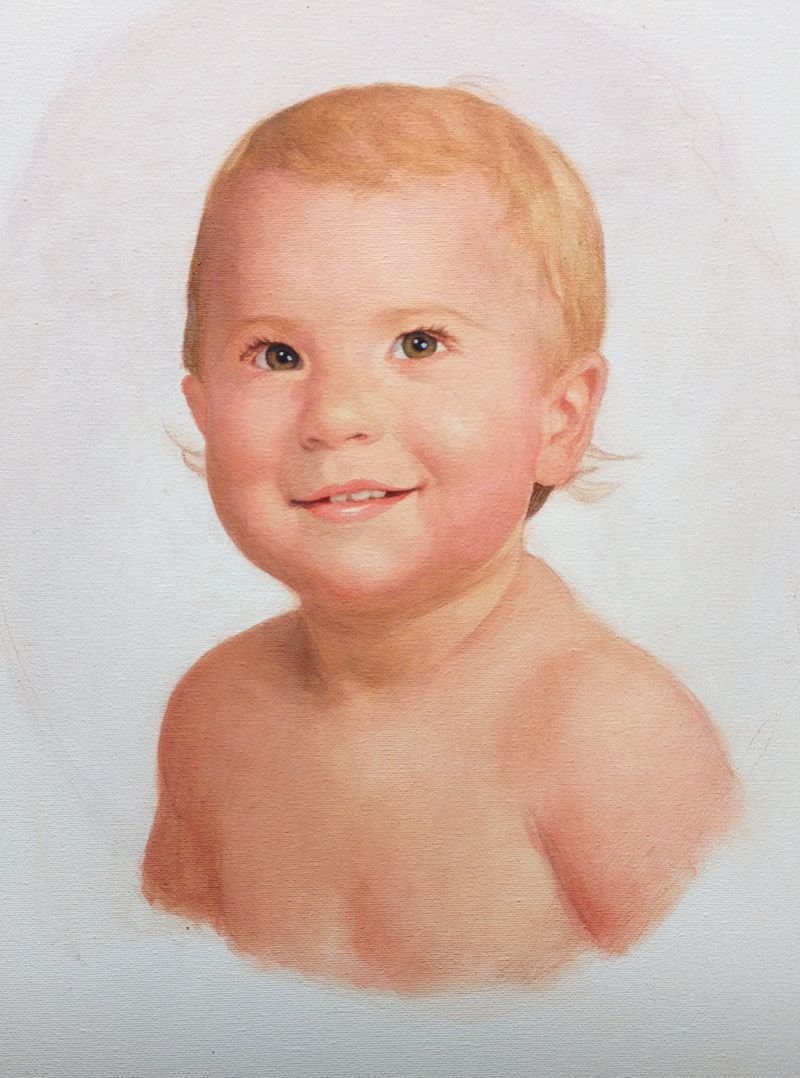
Now the portrait is starting to look realistic. But there’s still a lot of work to do. 50% of your time will be spent getting the portrait to a stage where it looks passable. The other half is spent on smoothing things out and refining details. If you want your portrait painting to go to the next level, and have a portrait you can be proud to show others, you can’t miss the final steps. It takes some patience, but it’s worth it.
In this step, I added the reflections in the baby’s eyes. They’re not finished yet, but I started them. I added two light blue dots in the correct places within the pupil. That way, in the next step, I can add a smaller white dot in the middle of them and then they will look like there’s truly light reflecting off of them.
For the mouth, it’s important to make sure the coloring of the lips is correct, and that the teeth are not too white.
Again, because of our symbolic association of teeth being white, we often paint them with…white. But in actuality, most’ people’s teeth are not white even with a bright light shining on them. And then the shadows from the mouth itself causes them to appear even darker.
So what I did was mix raw umber dark and a little titanium white and then went over the teeth with that. I developed some shadows just around the edges with a few more layers, so they don’t look paper-flat. I pay attention to the shadows on the corners of the mouth, and that’s where it creates depth. Teeth should be lighter towards the center–the front teeth–because that’s where the light is hitting them.
For the background, I’ve been adding several layers of ultramarine blue, with a little raw umber dark, and alizarine crimson. This will create the oval vignette look that the client requested, and also some differentiation between the foreground and background. With this, the warmer colors of the face will come forward in space against the cooler tones of the background.
And that’s exactly what we want: to create depth.
Step 6: Smoothing Out the Roughness
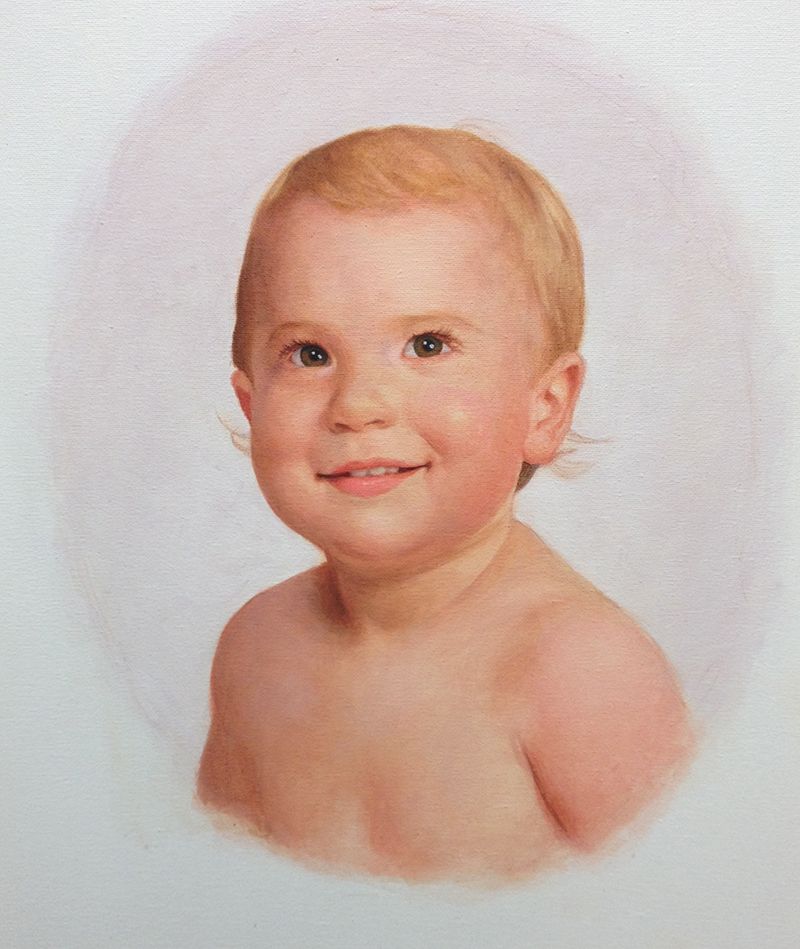
One of the downsides of the glazing technique is that it creates a lot of unwanted texture. That’s because the semi-transparent glazes pool up in the pits of the canvas surface and creates an uneven look, when you view it closely.
To compensate for that, we have smooth it out.
I used the same colors I had throughout the painting, but then add a little titanium white to make the layers more opaque. You only want enough to partially cover over the previous layers. You still want all the other layer-work to shine through. It’s something you have to play with to get the correct amount. Also, keep in mind that when you add white to the layers, you cool them down color-wise, and so you have to add some warmer colors to compensate.
Unless you’re trying to cool the skin tones down on purpose. Then the white can help you with that!
I found that my skin tones overall were just a bit too warm, so I used the white–again, mixed in with other colors, and still thinned out with a glaze–to cool them down. You can’t do that so much on top of the darker values, however, or you’ll muddy up the color. There you’ll have to use raw sienna (which is very opaque) and mix a bit of alizarine crimson and ultramarine blue to offset the yellow.
Step 7: The Final Details and Finishing it Up
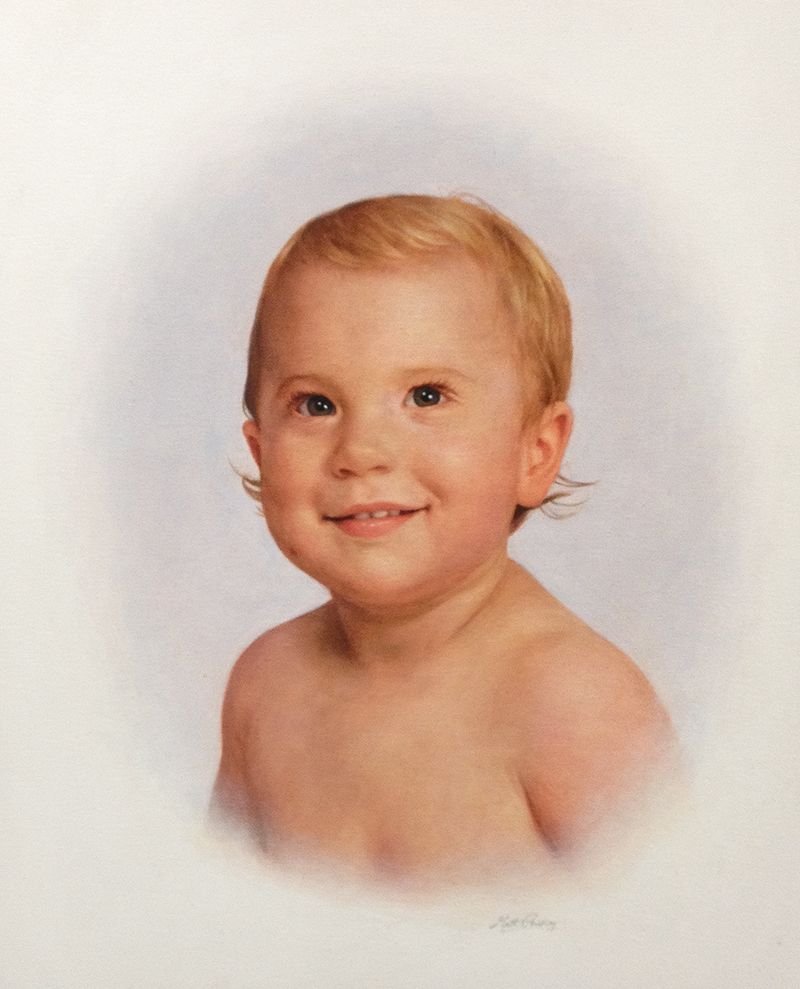
At this step, you feel pretty good about the painting. It looks just about done, and because you’ve layered everything, you don’t have any white space left on the canvas, that would indicate the painting is not done.
And that’s a good thing.
But it’s good just to take it a bit further.
I went over everything: enhancing the contrast, putting in some final details within the eyelashes, the teeth, the shiny reflection on the lower lip to make it look moist (as you can imagine a baby’s mouth usually is.)
The hair needed a little more realism, so I added some highlights with raw sienna, indian yellow, and titanium white.
Also, I darkened the background with a few more layers to really heighten the contrast. And then I used some glazes of titanium white the smooth out the edges of the vignette oval and give it a cloudy look.
Although I could continue working on the painting for hours more, there is a point where the law of diminishing returns comes into play. At a certain point, you’re just pushing paint. You’re not really making a significant difference in the overall impact of the painting. And you are even starting to undo the good things you’ve accomplished!
That’s when you know it’s time to call it done. And so I did.
Finally, I signed it. That was the most fun step of all!
When you sign your painting, I recommend making your signature legible, but not too prominent, that it overshadows your work. It’s also good to use a color that’s similar to what’s already in the painting so it matches. In this case, I used ultramarine blue, and raw umber dark mixed with white.
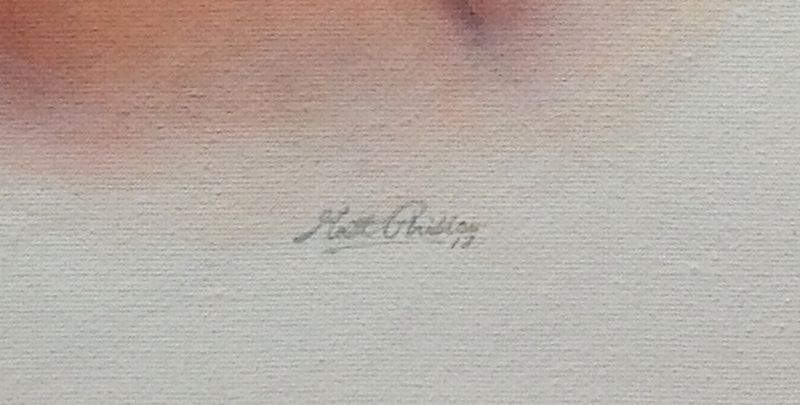
After the painting was finished I emailed an image to the client for approval. When you’re happy and your client is happy, then your job is done.
Time to go out to dinner and celebrate!
An Extra Bonus:
Here’s a time-lapse video showing the whole progression of the portrait as I painted it. The video is about 5 minutes long. Enjoy!
Have a blessed day,

P.S. Did you find this post helpful or encouraging? If so, send it on ahead! Let others know with the share buttons below. I’d love to hear your comments. Thank you so much!
